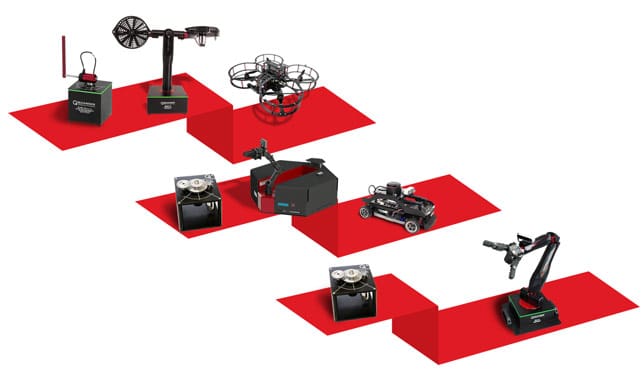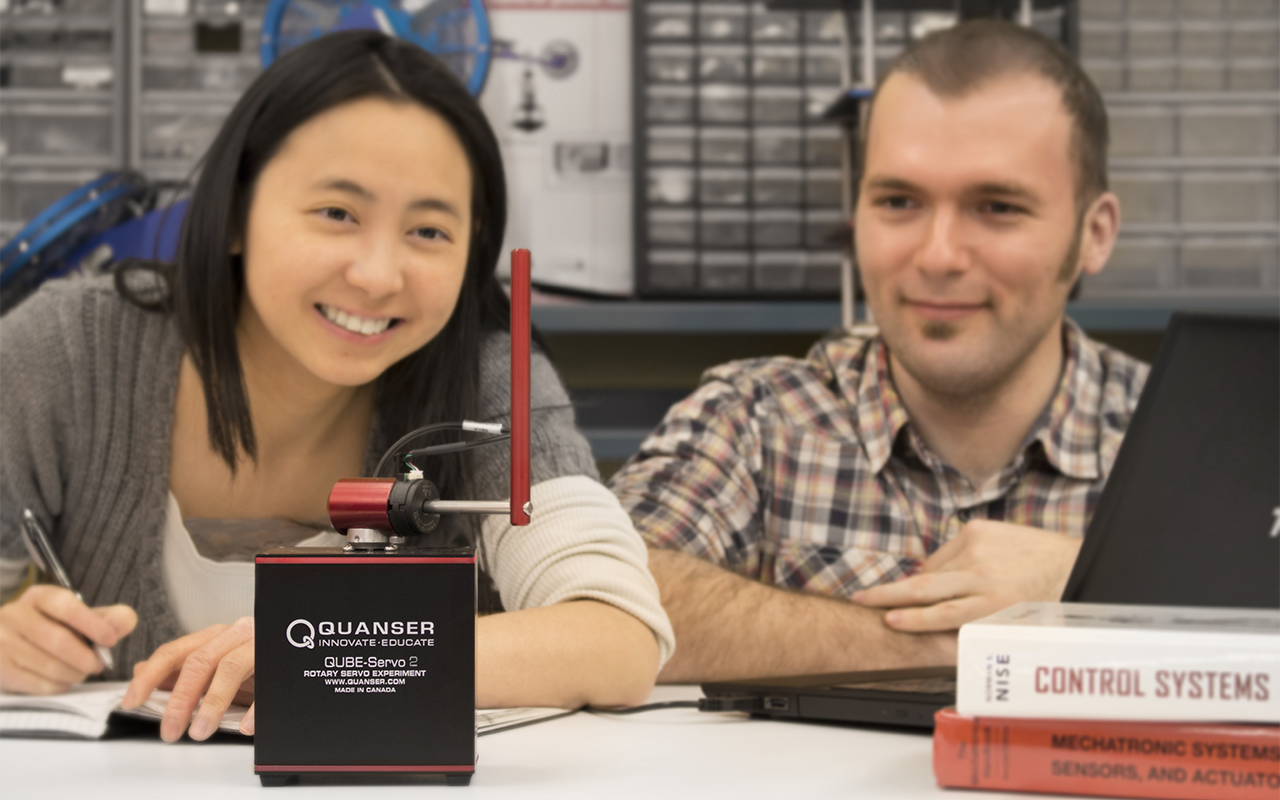
In this blog post, I will discuss the recent changes made to ABET’s Criterion 3, which defines student outcomes. I will also propose ways of how you could go about transitioning existing Quanser ABET-aligned curriculum from the old (a)-(k) student outcomes over to the newly adopted ones.
A bit of background …
For those readers who may not be familiar with ABET, the acronym stands for the Accreditation Board for Engineering and Technology. It is a US-based non-governmental organization that accredits post-secondary education programs in applied and natural science, computing, engineering, and engineering technology. Its popularity as an accrediting body has gone beyond the United States, with over 4,000 accredited programs in 32 countries as of May 2020. Accredited schools use the ABET seal of approval as an assurance that their program meets the quality standards established by the profession for which it prepares its students.
Quanser started offering an ABET-aligned curriculum over ten years ago with our Rotary Servo Base Unit platform. Over the years, we’ve extended this offering to several other popular products, including the Quanser AERO and QUBE-Servo 2 systems.
Student outcomes pre-2019
Integral to the accreditation process is conducting an internal evaluation and completing a self-study report, which are meant to demonstrate how well the program meets the accreditation criteria. One of the key criteria is “Criterion 3: Student Outcomes”. Student outcomes describe what students are expected to know and are able to do by the time of graduation. These outcomes relate to the knowledge, skills, and behaviors that students acquire as they progress through the program. Up until the 2019-2020 academic year, accredited programs were required to map their courses to the following student outcomes:
a) an ability to apply knowledge of mathematics, science, and engineering
b) an ability to design and conduct experiments, as well as to analyze and interpret data
c) an ability to design a system, component, or process to meet desired needs within realistic constraints such as economic, environmental, social, political, ethical, health and safety, manufacturability, and sustainability
d) an ability to function on multidisciplinary teams
e) an ability to identify, formulate, and solve engineering problems
f) an understanding of professional and ethical responsibility
g) an ability to communicate effectively
h) the broad education necessary to understand the impact of engineering solutions in a global, economic, environmental, and societal context
i) a recognition of the need for, and an ability to engage in life-long learning
j) a knowledge of contemporary issues
k) an ability to use the techniques, skills, and modern engineering tools necessary for engineering practice.
Our ABET-aligned curricula typically map to outcomes (a), (b), (c), (e), (g), and (k). For each outcome, we have defined indicators (or criteria) to help assess student lab reports. For example, for outcome K, which is “an ability to use the techniques, skills, and modern engineering tools necessary for engineering practice,” we define the following assessment criteria:
- k-1: Uses software tools for analysis
- k-2: Uses software tools to present data in a useful format
- k-3: Uses software tools to simulate physical systems
As such, any part of our workbooks, which requires students to apply math and engineering knowledge through calculations and problem-solving strategies, maps to the outcome (a). Similarly, sections of our workbooks that provide step-by-step instructions to conduct lab experiments, record, and analyze collected data typically map to outcomes (b) and (k). These mappings are clearly labeled in the instructor version of the curriculum as shown in the image below. As an added tool, we supply an ABET Guide, which outlines how instructors can assess the intended student outcomes of an entire lab.
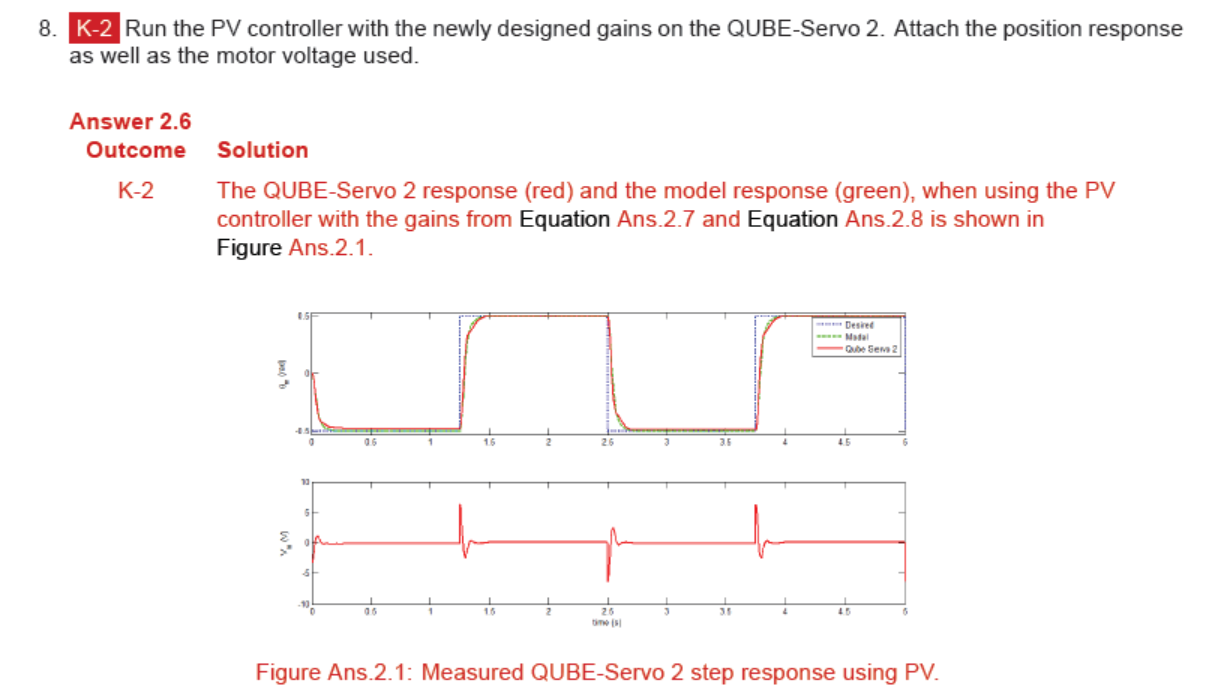
Sample student outcome mapping for the QUBE-Servo 2 curriculum
Out with the old, in with the new
Discussion about potential changes to the familiar (a)-(k) outcomes started in 2009 when ABET set out to harmonize the criteria across its own four commissions. Furthermore, based on feedback from its constituents, ABET was determined to revise the criteria to ensure that they are richer, better measurable, and above all, more realistic.
Starting with the 2019-2020 academic school year, accredited programs are required to use the revised Criterion 3, which now includes seven outcomes. The table below summarizes the new outcomes and how they map to the old ones:
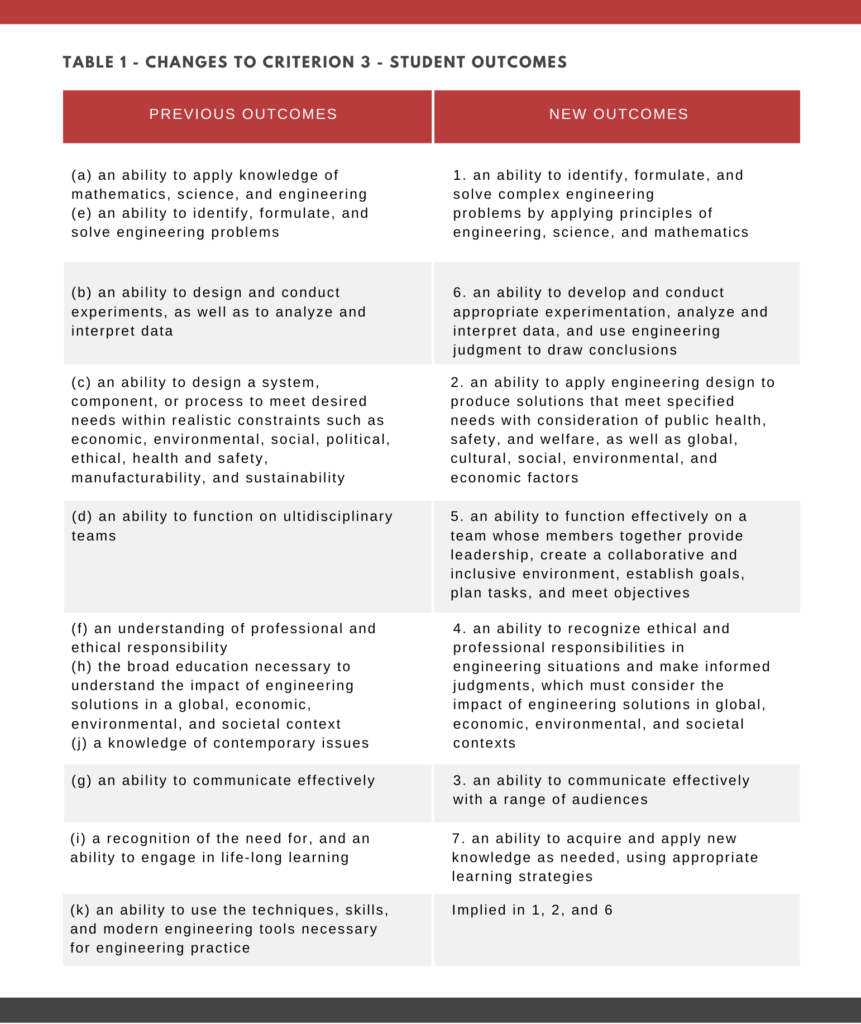
In addition to redefining some of the old outcomes, several others have been consolidated to form a single new outcome, hence reducing the overall number of outcomes from 11 to 7. For example, outcomes (a) and (e) have been combined into the new outcome 1, and outcomes (f), (h), and (j) have combined into the new outcome 4. Outcome (k), which is used quite heavily throughout our curriculum, is now implied in the new outcomes 1, 2, and 6.
Let’s look at a few examples …
In the current version of the Quanser ABET Guide, we detail our approach to aligning our curriculum with the old student outcomes (a)-(k). We also provide an assessment rubric. Below are the indicators we use for assessing outcomes (a) and (e):
Outcome (a): An ability to apply knowledge of mathematics, science, and engineering:
- a-1: Has strategies to solve the problem
- a-2: Performs calculations
- a-3: Explains results
Outcome (e): An ability to identify, formulate, and solve engineering problems:
- e-1: Describe the components of an engineering problem
- e-2: Formulate a systematic strategy to solve an engineering problem
Table 2 shows how outcomes (a) and (e) can be mapped to a new set of indicators for the new student outcome (1).
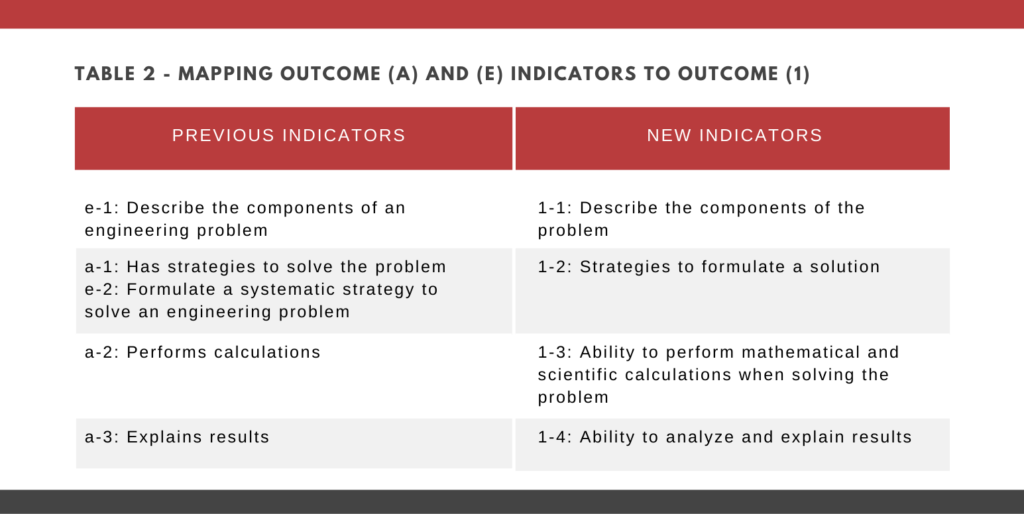
What gets a bit tricky, perhaps, is the outcome (k), which, in the new outcomes, is implied in outcomes 1, 2, and 6. Below are the indicators we use for assessing outcome (k):
- k-1: Uses software tools for analysis
- k-2: Uses software tools to present data in a useful format
- k-3: Uses software tools to simulate physical systems
One strategy to port outcome (k) to the new outcomes would be to first determine the purpose for using the software tool. For example, if the purpose was to solve a mathematical problem using MATLAB or software-generated graphs to explain the results of a mathematical problem, they could be mapped to outcome 1 as shown in Table 3. Otherwise, if the software tool was used as part of conducting experiments, outcome (k) could be mapped to outcome 6.
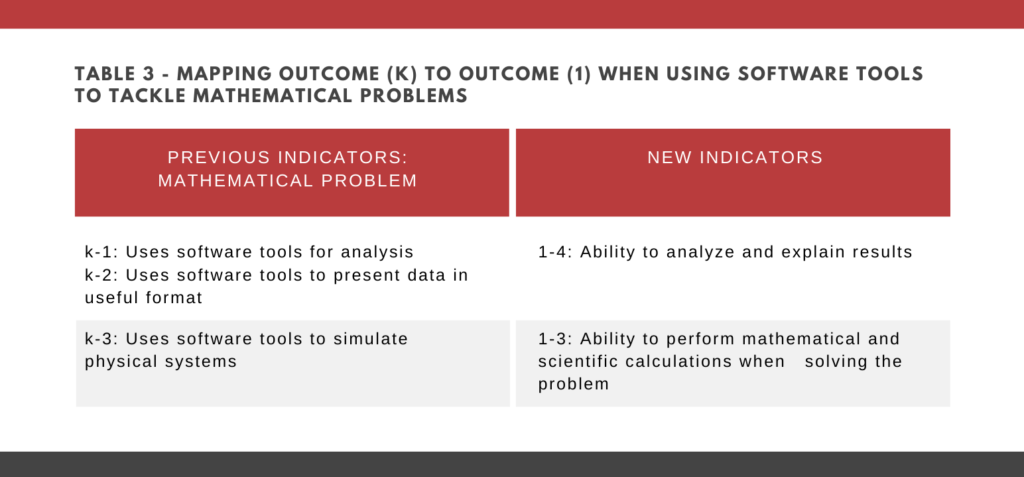
Moving Forward …
We are currently working on defining new indicators based on the new ABET student outcomes for selected future courseware. In the meantime, I hope I was able to explain the changes to ABET Criterion 3, and that you found the information presented here useful for porting your existing Quanser curriculum over to the new outcomes. As always, we’d love to hear about your experience and best practices. Email me or comment here to share them.

